If you hear the theme “Drink the river and mountain”, what kind of flavor drink would you envision?

Perhaps such a drink rooted in local resources will be the next generation of sustainable luxury experiences.
Our team at DIG THE TEA wanted to use botanicals as a gateway to explore the next generation of luxury experiences from Japan and start a new featured series. To kick start this new idea, we held an online event this fall that invited a herbalist, a sommelier and tea master, a bartender and a cultural anthropologist that specializes in contemporary cuisine.
As the first event hosted by DIG THE TEA, we explored the future of shikohin drinks under the event title, “DIG THE TEA EVENT vol.1, Drinking the river and mountain, The future of shikohin drinks using botanicals and local resources”.
The event was held on September 7th at the IXEY Non-Alcoholic Spirits Kyoto Distillery. This article will report on the event where our four invited speakers discussed the theme with DIG THE TEA facilitator, Otsuki.

Speakers (from left to right)
Shu Fujita: Cultural anthropologist specializing in contemporary cuisine
Marina Fujimoto: Tea master and sommelier, Manager of chayoi
Lyie Nitta: Herbalist, Founder of TABEL
Hiroaki Oda: Bartender, Owner of Bar iXey and iXey Non-Alcoholic Spirits Kyoto
Four specialists that explore botanical ingredients
—— Thank you all for joining us today. To start, I would like to ask each of you to introduce yourselves, starting with Mr. Oda, who kindly let us use this venue.
Oda: I run a bar in Gion, Kyoto that specializes in herbal liqueurs called the iXey. This venue where you have all gathered today is called the iXey Non-Alcoholic Spirits Kyoto.

Oda: We run a small distillation room here at the iXey Non-Alcoholic Spirits Kyoto.
Let me give a brief explanation on distillation. The most common way of making liqueurs is to soak something in alcohol to extract its aroma, such as the method used to make umeshu (plum wine). I was fascinated by the distillation method which uses steam from boiling the ingredients to extract the aromatic components of plants.
During the pandemic, I explored this method by distilling about 140 different plants. We took the ones that created the best results and created non-alcoholic spirits into commercial products we named miatina.
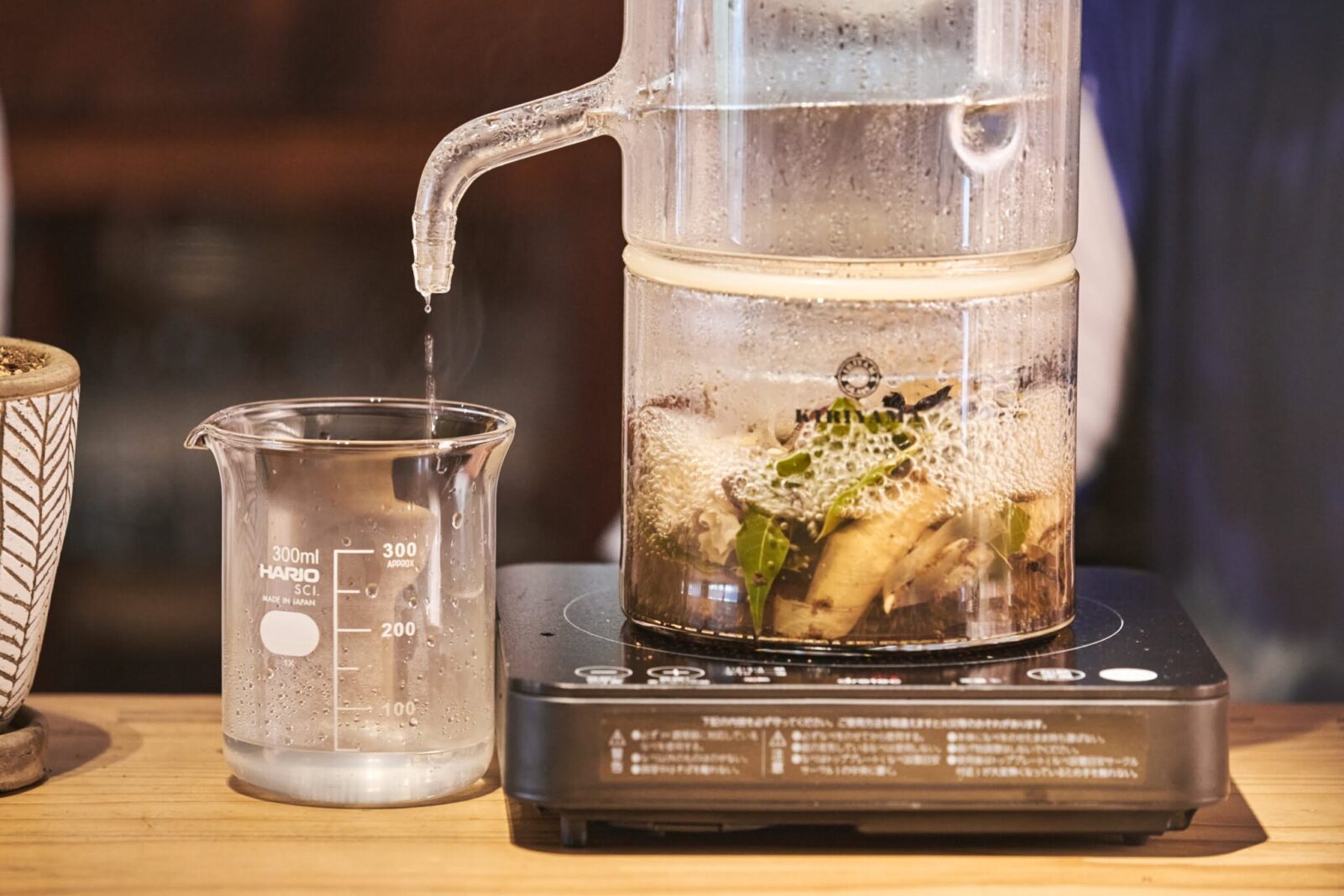
Nitta: I started studying to become a registered dietitian because I wanted to help people live a healthy lifestyle through food. However, I felt I met a dead end in the world of nutritional science where certain aspects of life were not being addressed.
In 2014 I began researching medicinal herbs and traditional tea culture by traveling around Japan and around the world in what I call the “Medicinal Herb Caravan”. I have been working with farmers to produce medicinal herbs and continue to research this area. I look forward to talking about various plants today.
Fujimoto: I started off working as a sommelier and a service staff worker for wineries and restaurants in Australia. However, although I am a sommelier, I don’t take well to drinking alcohol. I discovered the world of tea and have been exploring the depths of this botanical product.
Currently, I work as a sommelier and tea sommelier at the Chinese restaurant, -Tsugumi-, and also run a tea shop 「chayoi」.

Fujita: I am a cultural anthropologist and I specialize in the research of contemporary cuisine.
My definition of contemporary cuisine is the genre which takes the culture and nature of the region in which the restaurant is located and cooks in an avant-garde manner. By avant-garde, I mean the method of cooking that incorporates French techniques and scientific practices. In my research I ask, “what is cuisine?, “what is human?” and “what does it mean to eat?”.
The scenery that comes to mind with “Drinking the river and mountain”
—— The theme for today’s event is “Drinking the river and mountain”. What kind of scenery did you envision when you heard this expression?
Oda: It has been 20 years since I first came to Kyoto when I started university. Kyoto is a place that still maintains a strong traditional culture, with famous festivals such as the Aoi Matsuri and the Gion Matsuri. Festivals were originally held to worship and welcome gods of the mountains which traveled down to the city through the river.
Festivals are connected to the seasons and are a part of life in Kyoto. I think that people of the past would understand the theme, “Drinking the river and mountain” in a way that our modern generation may have forgotten.
Nitta: In 2023, I went to a festival in Daisen, Tottori Prefecture, called the “Mohi-tori Shinto Ritual”. “Mohi” is an ancient word for water. In this ritual, the priests leave the Shinto shrine on July 14th to collect and return with holy water and medicinal herbs.
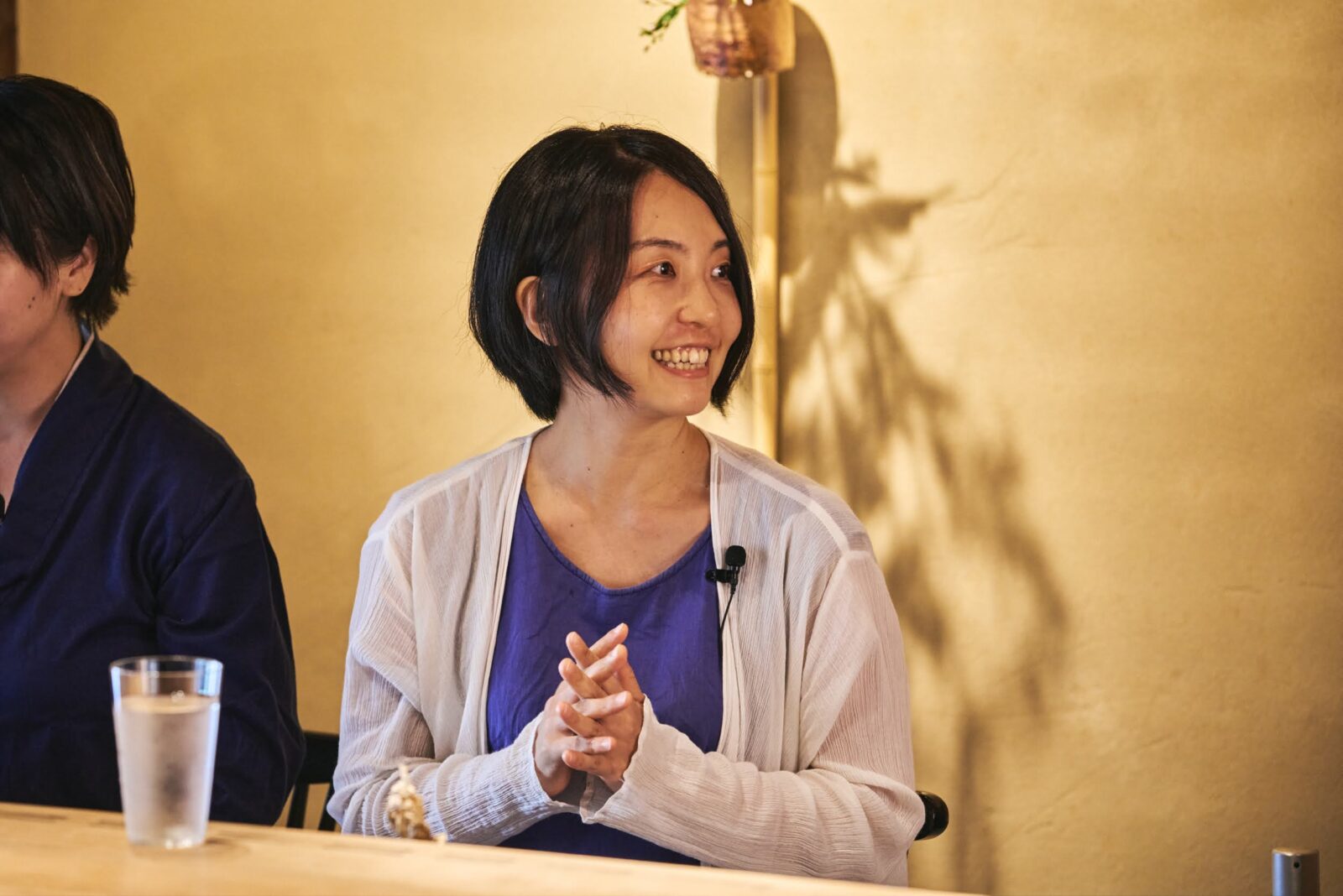
Nitta: The holy water and medicinal herbs are given out to those to attend to worship in the festival. I felt that the water was too special to drink, but I brought the medicinal herbs from the ritual with me today so I hope to share it with you all.
—— I have heard that many sacred mountains are the source of rivers.
Fujimoto: When I heard the words mountain and river, I envisioned the places I have visited in the past. In regions that produce tea, I envision places like Uji, Yame and Taiwan. When I thought about water being the most important resource for tea, I envisioned the Wuyi Mountain of China. The rock tea that is made in Wuyi Mountain is what made me fall in love with tea in the first place. Later, I would like to serve my personally prepared tea to everyone.
——What about you Mr. Fujita?
Fujita: I did not think of a specific drink, but I thought of a town. I recently visited Namie Town of Fukushima Prefecture. It is a region that was devastated by the tsunami in the Great East Japan Earthquake.
When I was standing in a grass field where the ocean wind was blowing, I wondered what could be cultivated there. Making something in such a region would have to have a different significance from the past ideals. I wanted to think about what I could accomplish there.

—— What are your thoughts on the “local movement”?
Nitta: There are a lot of people who are interested in the local movement today. While it holds a lot of potential, it also faces many challenges such as a shortage of domestic labor. The medicinal herb (Artemisia monophylla), which was handed out at the festival, has no established method of cultivation. Some local medicinal herbs are also considered endangered species so it is a complex issue.
Nitta: That’s a worrisome trend. I visited Finland in June and I learned that the Finnish people pray to express gratitude before entering the forest. The same is true for the Ainu people. They only collect what they can reach with their own hands. I was impressed that there was a common understanding of such manners and practices. When something becomes commercialized, this delicate balance is often disrupted. I think we have reached a point where we must reevaluate our way of thinking.
Fujimoto: I will be visiting Wuyi Mountain soon, which is a region that is looking into the local movement in China. I hope to look into what kind of people are working there and what their working environment looks like. We can do some research on the internet, but when it comes to local movements, I want to go in person to experience the drinks they serve there.
Fujita: Don’t you find information on the local movement in China on TikTok? I saw a video of a Chinese festival of an ethnic minority group in China that showed researchers in that field ecstatically dancing. Perhaps you will find information on unknown local teas on social media.
—— Speaking of local movements abroad, Mr. Fujita, you have experience working at Central, a restaurant in Peru that has been selected as one of the best in the world, as part of your field work. Did you work with the local community in Peru during that time?
Fujita: I connected with the local community through introductions by a local anthropologist who was researching agriculture in rural Peru. There are people whose job is to help people connect with local communities.
There was an issue in how to pay villagers gratitude money. For example, some villages do not have much need for cash and if you pay only one person in that village cash, it can lead to bigger problems. In such cases, you have to understand how to properly handle finances toward those villages.
There is also the need to manage how the medicinal herbs are harvested. There are people whose role is to understand the local village’s rules and figure out distribution. The issue of overexploitation was mentioned earlier. There are people in Japan who also hunt and forage, so I believe it is necessary to connect with such local people as well.
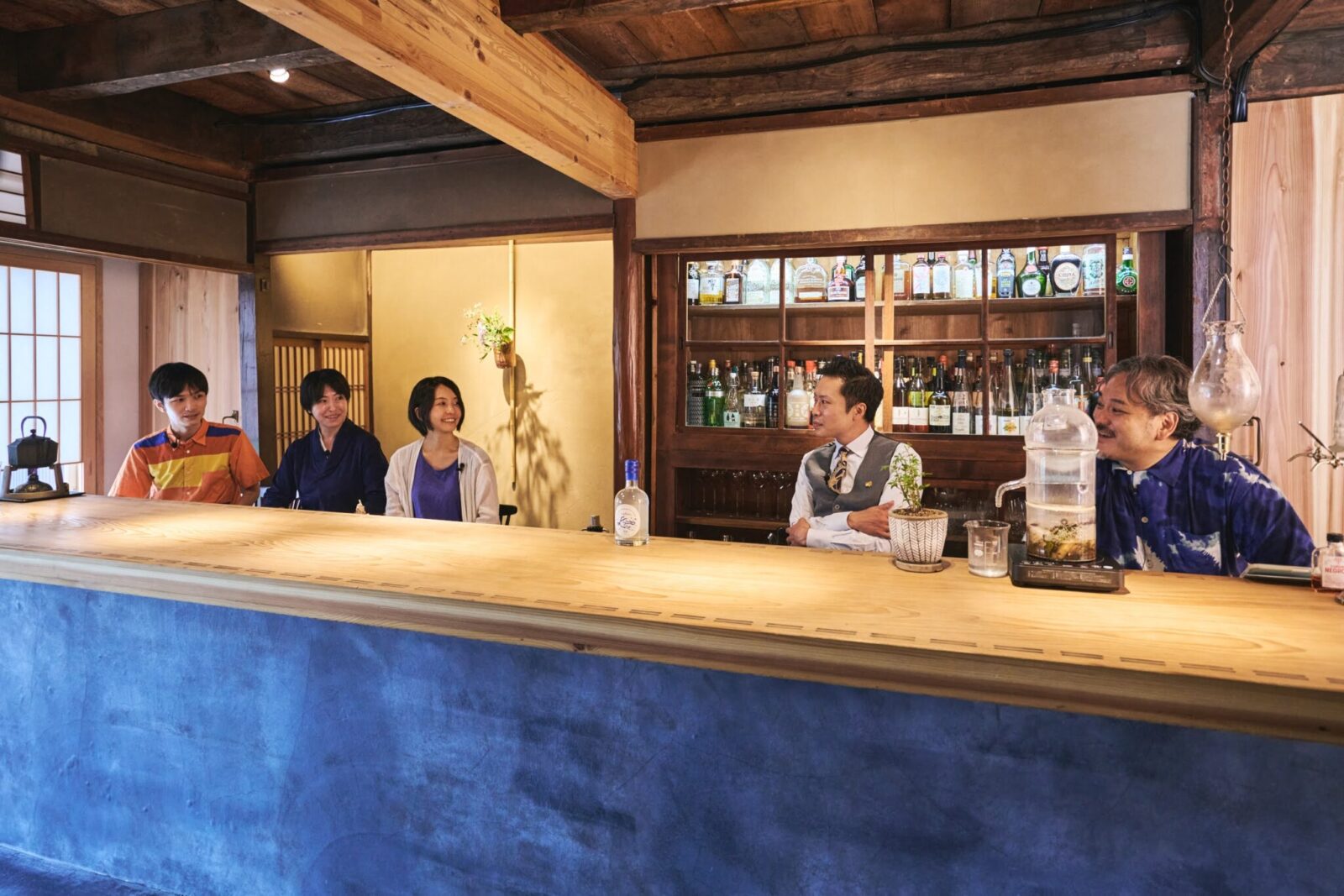
The keys to creating sustainable drinks
—— Please tell me about what you focus on when you think about the sustainability, ethicality and biodiversity aspects of creating the drinks of the future.
Oda: We offer three flavors of our non-alcoholic spirit miatina products. One of them is 然仙Nensen, which is made from Jindai cedar and Japanese cypress trees. To make this product, we use the wood shavings from Nakagawa Mokkougei Hirakoubou in Shiga Prefecture that are a byproduct of when they make barrels.
—— Nakagawa Mokkougei Hirakoubou is known for making champagn coolers that are approved by Dom Pérignon.
Oda: Yes. Wood shavings are a natural byproduct of their production and were disposed of in the past. Nakagawa Mokkougei Hirakoubou used to make bath products and air fresheners with them, but it was not enough to make use of all the byproducts.
We experimented with distilling the wood shavings and it resulted in a very pleasant aroma. Ever since we have been using their wood shavings.

Oda: Our other two non-alcoholic spirits products besides Nensen are made with the same concept.
Tokijiku is made from a blend based mostly on the leaves of the Yamato Tachibana tree, which grows in Nara Prefecture and is said to be the oldest citrus fruit tree in Japan. Rather than using the fruit of this tree, we use the leaves used from pruned branches. There are many plants which have a pleasant aroma but are inedible. The distillation method allows us to make use of such materials.
When developing products at IXEY, we shine the spotlight on materials that would otherwise be disposed of and make use of them for a more sustainable future. That is one of our priorities.
Nitta: When looking at medicinal herbs from the standpoint of sustainability, there is the idea that we should replant whatever amount we extract and use. In Iwate Prefecture I heard that traditional farming methods look at production in 80 year cycles. For example, the cycle disperses where trees are planted over the years and farmers will work to find ways to cultivate plants from seeds to seedlings. Bringing back such values and putting them into action is underway today.
Also, we are living in an age of rising costs and inflation so I would like to see a kind of domestic fair trade initiative be put in place so that the burden of high costs does not fall solely on the farmer’s shoulders.
—— This is the first time I have heard the expression “domestic fair trade”. Fair trade is commonly understood as an initiative for overseas farmers, but it will be nice to see the value and prices of domestic products be reflected fairly too.
Nitta: I am glad to hear you say that because valuing the producers who work behind the scenes is important in all regions around the world. Climate change is having a big impact on agriculture and fisheries. Whether it be typhoons or earthquakes, I would like to see a society that can help each other through hard times.
Fujimoto: I work at a restaurant so sometimes I ask the kitchen staff to keep the vegetable and fruit peels for me which I dry and use in tea. The skin of fruits and vegetables are more astringent and aromatic so they tend to make good tea. Seeds are also good. I try to reduce waste by thinking of ways to turn them into a delicious drink.
—— Do you make any non-alcoholic drinks?
Fujimoto: Most of the drinks I make are non-alcoholic tea drinks.
I use methods such as pouring hot water, cool water extraction and boiling. When customers tell me the flavor of a tea is a new experience for them, they are surprised when I tell them that I use the peels of fruits and vegetables.
Fujita: When thinking about sustainability and ethicality, I focus on folklore.
I am originally from Hamamatsu, Shizuoka Prefecture and I grew up in a region that was not in conflict with the state. However, when I visited Tohoku, Iwate and Fukushima Prefectures, I realized that their relationship with the state was different from where I grew up.
They have a long history of creating their own folk tales and newspapers. Among these, there are probably foods that are unique to their region. I study folklore in order to dig out such knowledge that is rooted in the land.
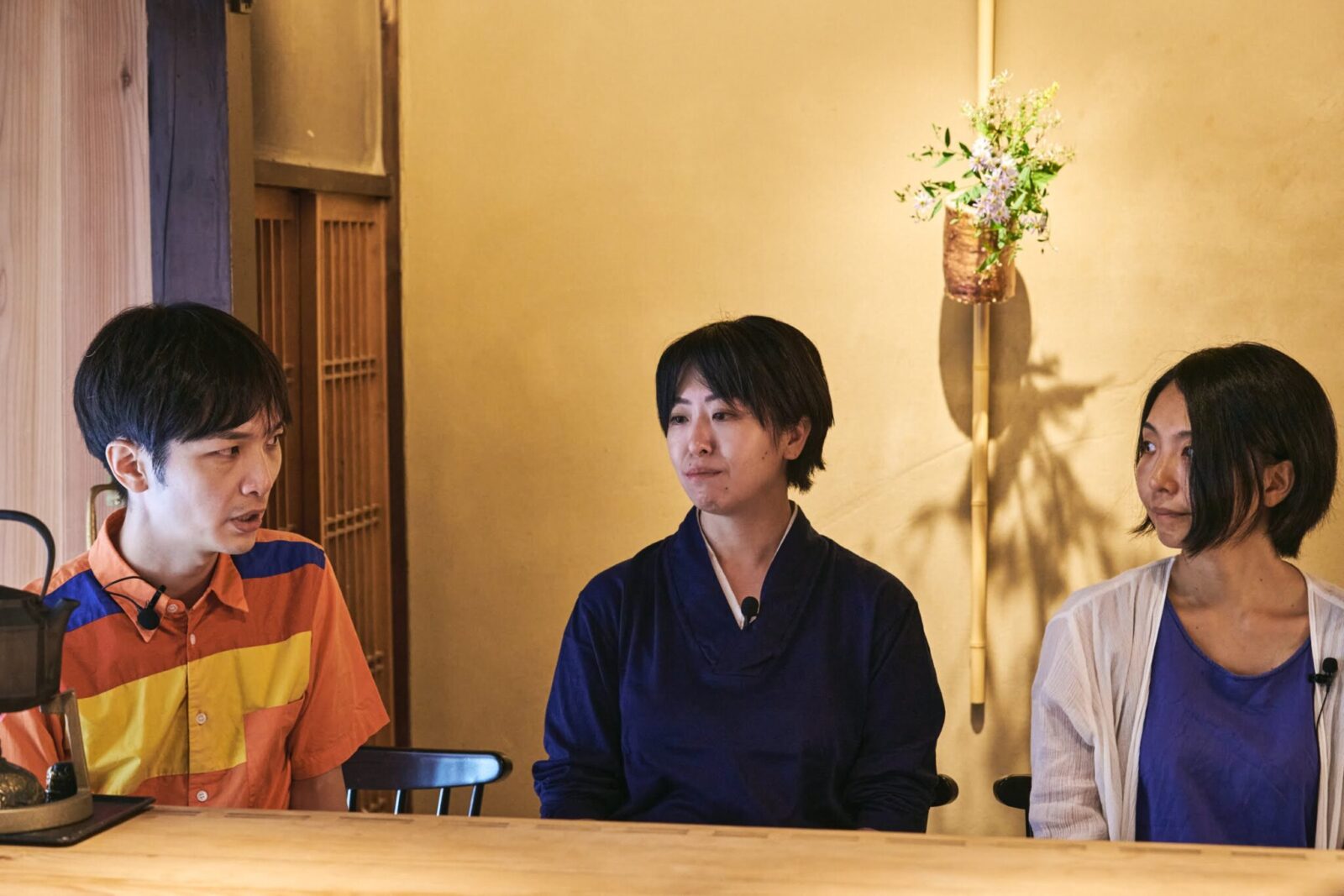
—— It’s true that unique cultures are cultivated in each region. One thing that I’ve noticed is that only certain foods, such as New Year’s dishes that are customary to eat once a year, seem to remain as part of the regional culture. I would like to see regional dishes remain as a daily staple dish, but food and drinks are easily swallowed up by globalization.
A drink that expresses “Drink the river and mountain”
As part of the event, we had the invited speakers present their experimental and original drinks based on the concept of “Drink the river and mountain”.
The theme of the drink presented by Nitta was called “Between birth in water and the bountiful harvest”. She used the medicinal herb (Artemisia monophylla) from Tottori Prefecture’s sacred region of Daisen to express birth and fertility in two glasses of water.

Fujimoto’s drink was called “A Taste of Wuyi Mountain”. It was presented in a traditional Chinese style called Happocha (eight treasure tea) and represented the Wuji Mountain of Fujian Province in China.

Oda served a drink called “The Jindai Cedar Fizz”. His non-alcoholic cocktail was made with non-alcoholic spirits with a spicy and wooden aroma as its base.

Having the speakers create their drinks on the spot at the event was a very experimental challenge, but it showcased how their individual experiences, knowledge, creativity and worldviews reflected the shared theme in a colorful variety of ways.
Through this event, the DIG THE TEA team sensed a certain confirmation that unique botanical ingredients from various regions had the potential to be used in new drink creations.
We received feedback from the event participants saying that they would have liked to smell and taste the drinks and we regretted that this was not offered. For the sake of those who were not able to taste the drinks, we wrote another article that introduces each experimental drink’s flavors and aroma.
After the making of the experimental drinks, the speakers discussed the topic of new drink experiences.
The future of drinks and how to create new standards
—— What kind of drink experiences do you envision in the future through tea and other drinks?
Fujimoto: I am currently focused on Chinese tea and I really love Chinese history and culture. The most common question I receive is on where to start when exploring Chinese tea. Even Japanese tea has its roots from China.
You can start enjoying Chinese tea by simply putting tea leaves in a mug and pouring hot water on it. Even for those who are not interested in Chinese tea, I suggest that they start here so they can become more acquainted with it.
We will open a Chinese restaurant in Gion, Kyoto next to the Yasaka Shrine in November. I will be sharing information about tea pairings from this location so I hope we can create a space where people can enjoy tea more casually.

Nitta: While I was studying the tea ceremony I heard the saying, “There is no conflict where there is tea.” I believe tea is about creating harmony.
Another Chinese tea master told me, “One sip of tea balances the body. Two sips balances the mind. Three sips balances your path.” Path means the way of life.
Time spent with tea brings balance and I hope that I can help provide people with such moments. I hope that people can enjoy tea in their daily lives without feeling too uptight about it.
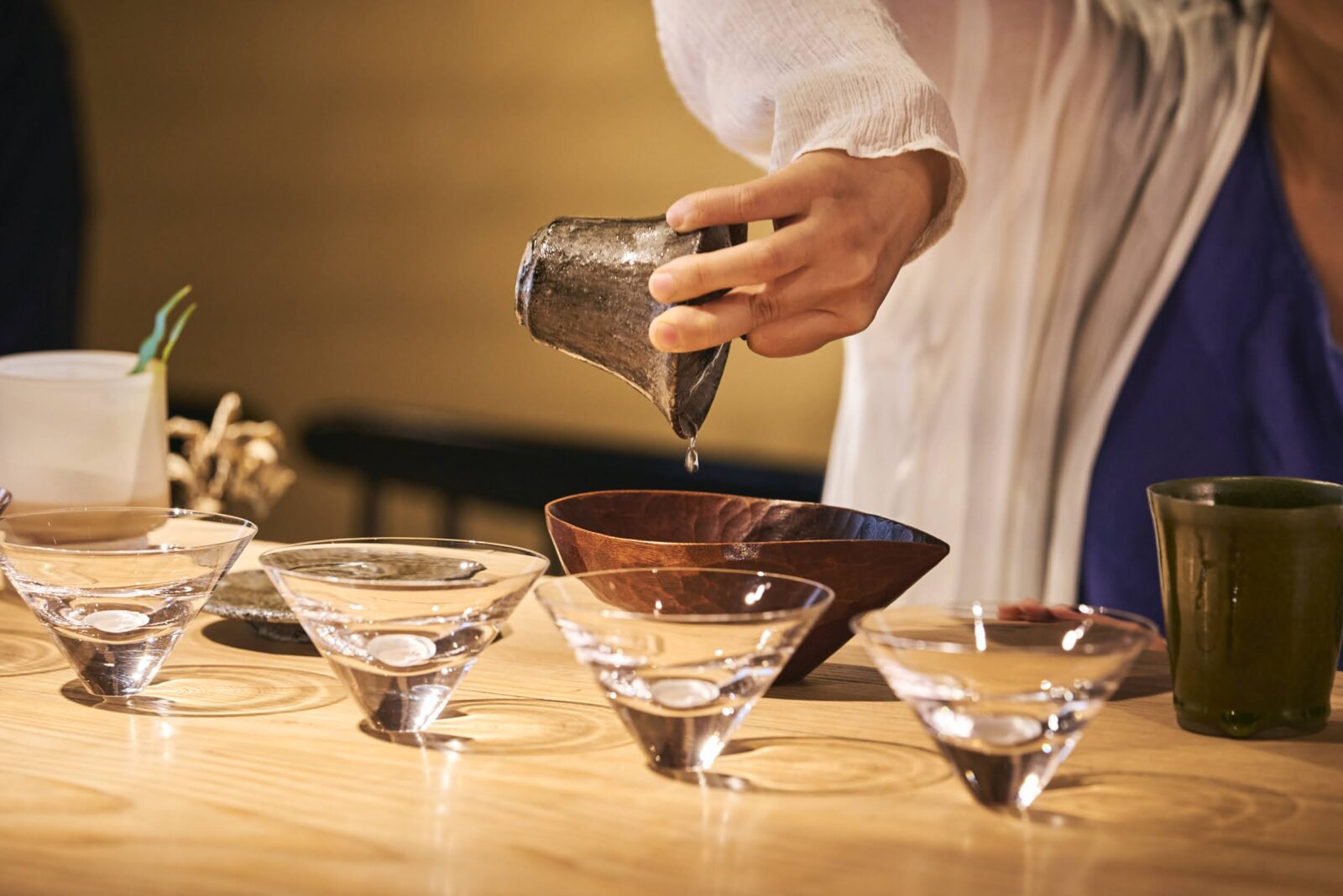
Oda: Non-alcoholic spirits are not something many people are familiar with today. I explained this product to a lot of people when I started this distillery, but not many people understood the idea. However, I have been told that they finally understand when they come here and drink a non-alcoholic cocktail.
I hope to raise the recognition of non-alcoholic spirits and would like to create a classic cocktail using it.

Oda: You use the expression, “the next luxury” at DIG THE TEA and I agree with this sentiment. I am aiming to create the next luxury.
Once a classic cocktail is developed, it leads to more creative ideas that emerge from it. My goal is to build the basis for that.
Fujita: Even with the inspiration of “Drink the river and mountain”, the truth is that herbs and wood do not taste good on their own. They have a good aroma, but they are not sweet or flavorful. Ms. Nitta’s and Mr. Fujita’s creations really brought out the best of the ingredients.
On the other hand, Mr. Oda’s cocktail had a strong impact of flavors. The flavors popped. This difference in approach may be the first step in understanding the appeal of mountains and rivers.
Oda: There is a lot of history behind cocktails. I want to write the history of non-alcoholic drinks. After that, I want to help the culture flourish. I hope to build a solid ground for non-alcoholic drinks, like that which exists for tea and cocktails.
—— This event, “Drinking the river and mountain” gave us a lot of inspiration for future DIG THE TEA features. Special thanks to all of the guest speakers.
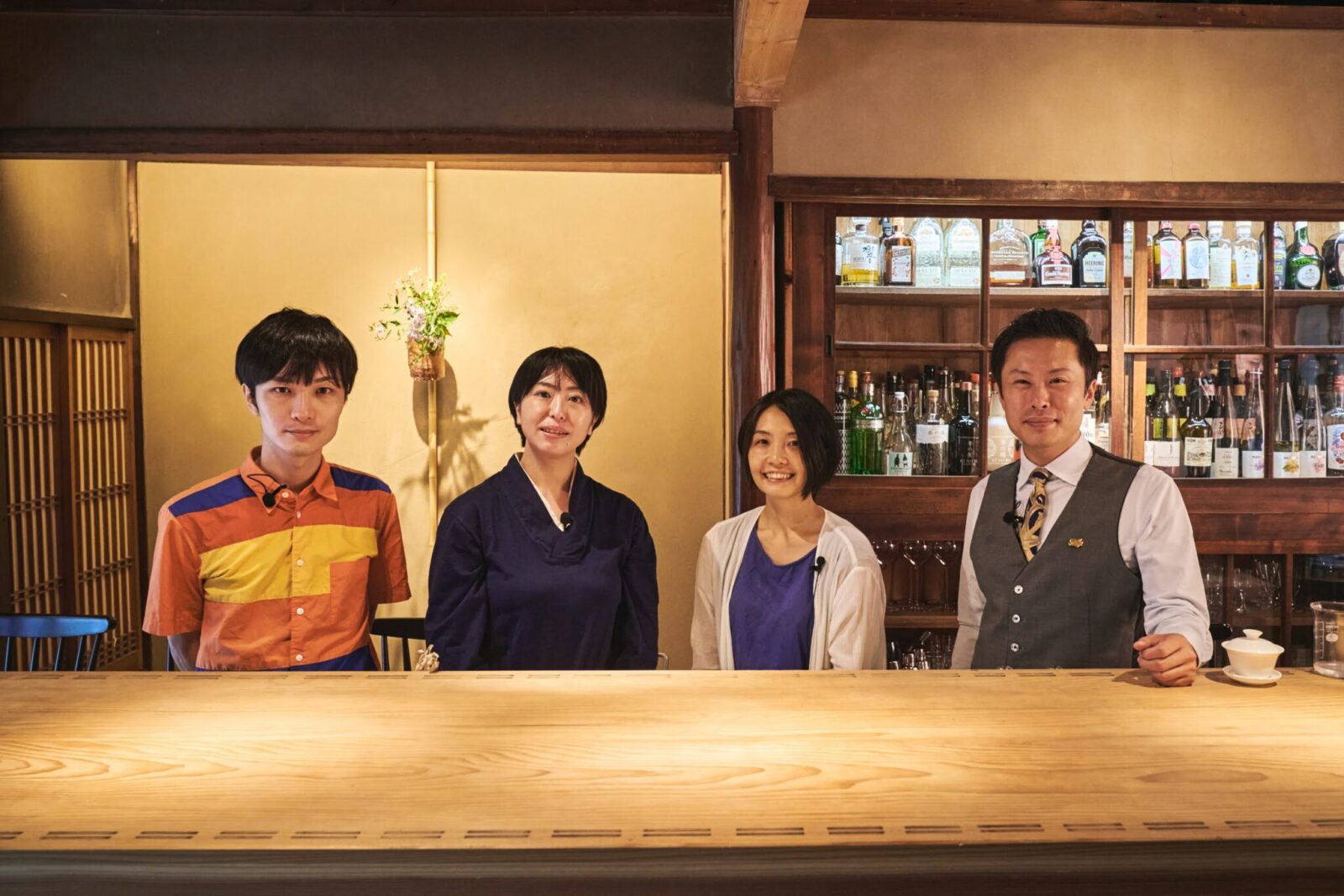
Follow us! → Instagram / Twitter
Translation: Sophia Swanson
Editor / Writer. A freelance editor. Born in Yokohama and based in Kyoto. Associate editor of the free magazine “Hankei 500m” and “Occhan -Obachan”. Interests include food, media and career education programs such as “Internships for Adults”. Hobby is paper cutting.
Editor and creator of the future through words. Former associate editor of Huffington Post Japan. Became independent after working for a publishing company and overseas news media. Assists in communications for corporates and various projects. Born in Gifu, loves cats.
